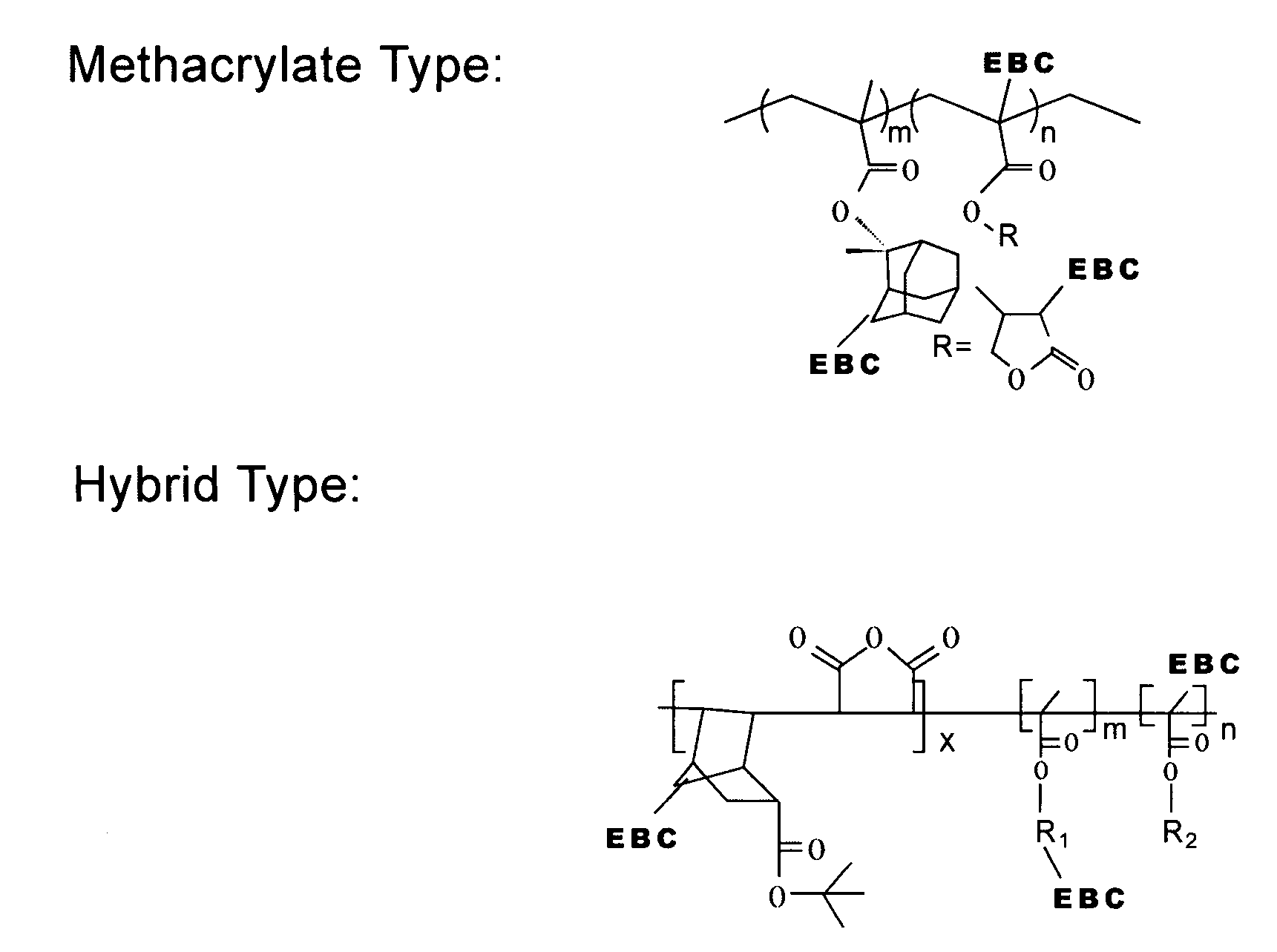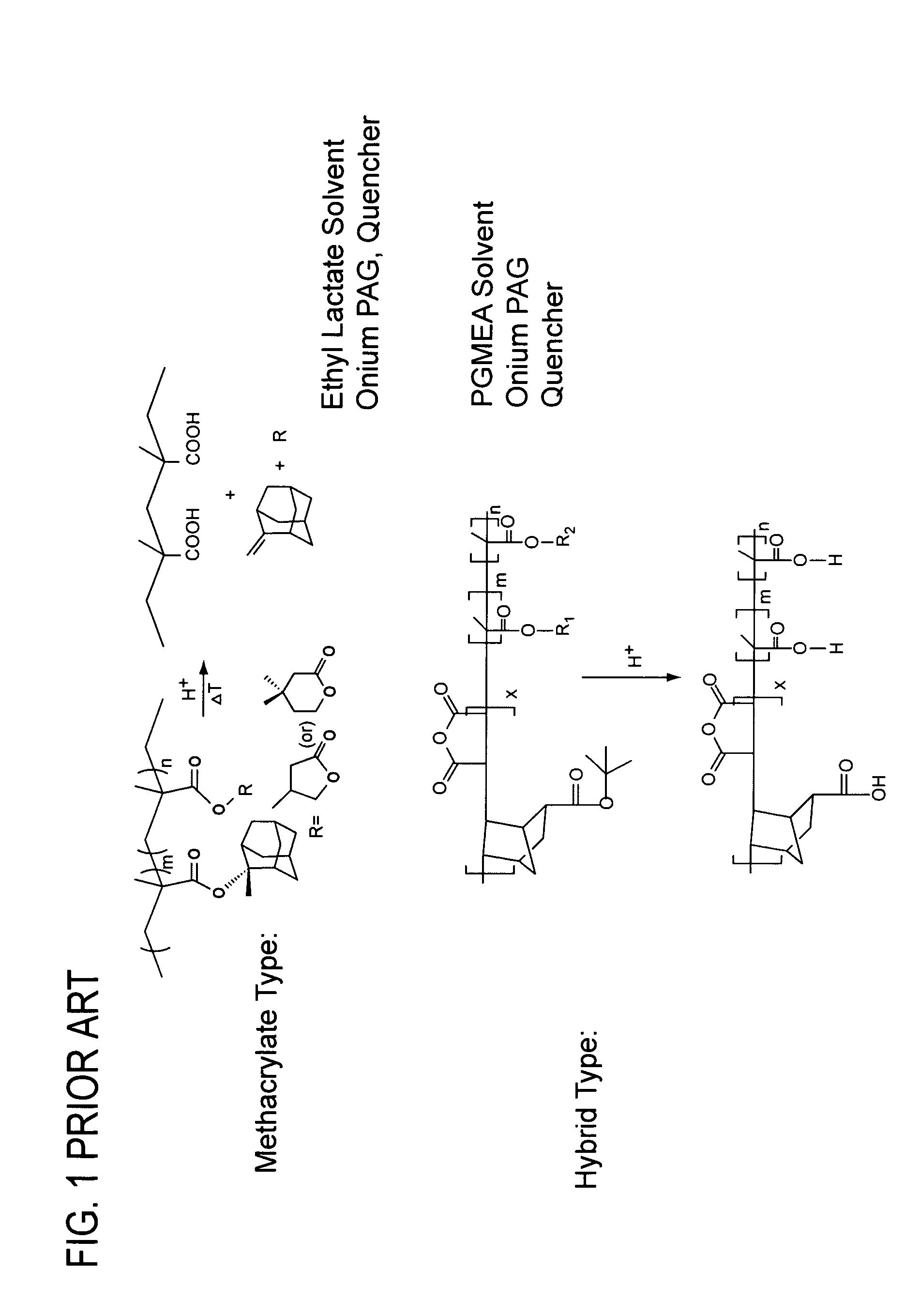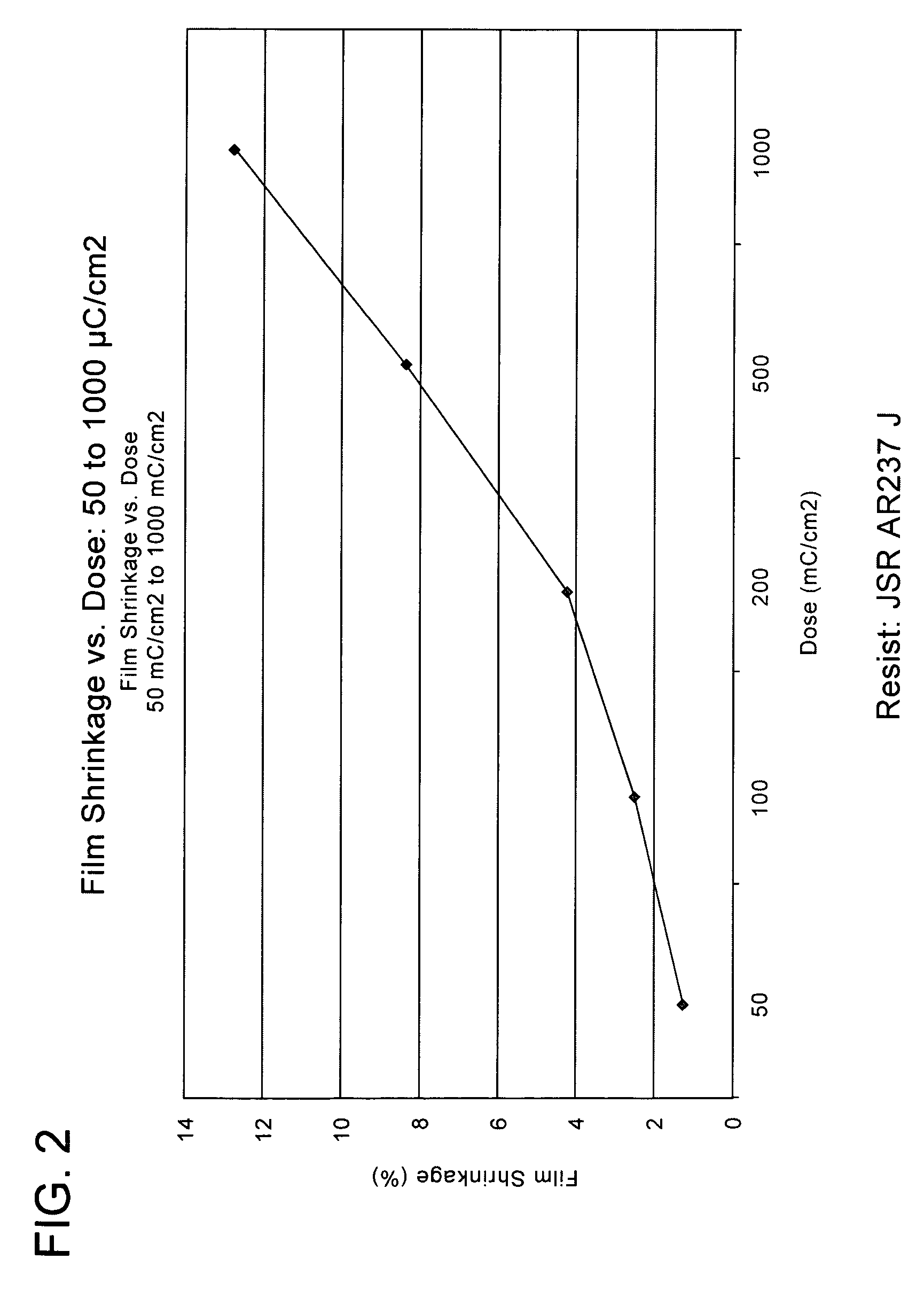E-beam curable resist and process for e-beam curing the resist
- Summary
- Abstract
- Description
- Claims
- Application Information
AI Technical Summary
Problems solved by technology
Method used
Image
Examples
Embodiment Construction
[0024]One or more embodiments of the present invention provide one or more of the following advantages: (a) elimination, or reduction, of photoresist film shrinkage and pull-back after electron beam (“e-beam”) treatment; (b) elimination, or reduction, of the loss of volatile materials during e-beam treatment (i.e., materials that leave the photoresist film resulting in film shrinkage, and / or contamination of an e-beam treatment chamber); and (c) reduction of e-beam treatment doses required to increase its etch resistance, thereby reducing ablation of photoresist components (which ablation leads to shrinkage).
[0025]One or more embodiments of the present invention is a photoresist formulation that includes e-beam cross-linkable substituents that include the following characteristics: (a) the e-beam cross-linkable substituents provide little or no increase in absorption at a particular exposure wavelength used for patterning relative to typical prior art formulations (for example, a tr...
PUM
 Login to View More
Login to View More Abstract
Description
Claims
Application Information
 Login to View More
Login to View More - R&D
- Intellectual Property
- Life Sciences
- Materials
- Tech Scout
- Unparalleled Data Quality
- Higher Quality Content
- 60% Fewer Hallucinations
Browse by: Latest US Patents, China's latest patents, Technical Efficacy Thesaurus, Application Domain, Technology Topic, Popular Technical Reports.
© 2025 PatSnap. All rights reserved.Legal|Privacy policy|Modern Slavery Act Transparency Statement|Sitemap|About US| Contact US: help@patsnap.com



